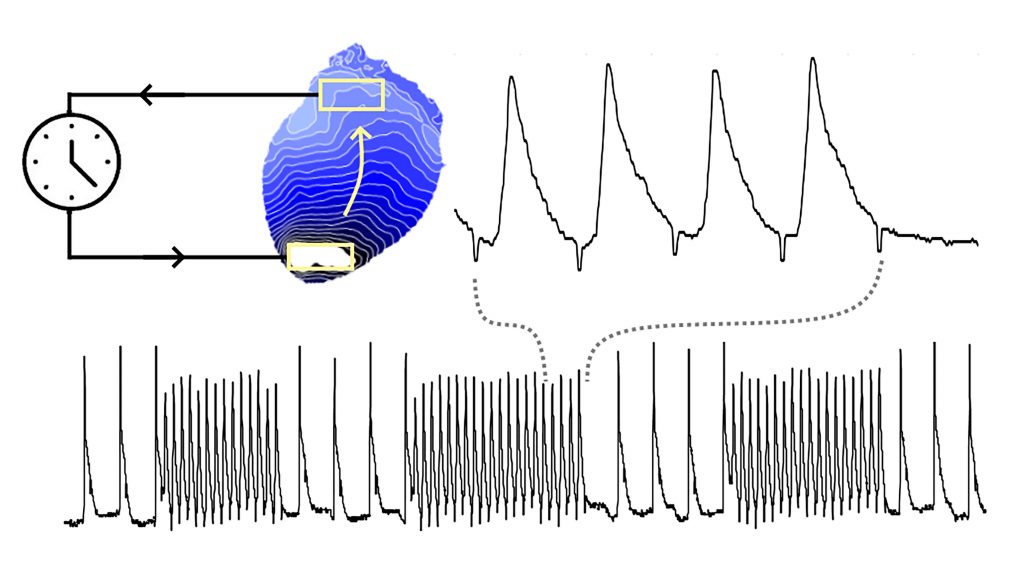From the Journal: Chaos
WASHINGTON, December 22, 2020 — Over 300,000 people die each year in the U.S. due to sudden cardiac death. In many cases, sudden cardiac death is caused by abnormally rapid heart rhythms called tachycardias, which means the heart cannot pump adequate blood to the body.

In Chaos, by AIP Publishing, researchers use mice to study tachycardias and find there are intrinsic mechanisms that exist in heart tissue that they hypothesize lead to the self-termination of rapid cardiac rhythm.
“A tachycardia is a heartbeat continuously activating the heart, like a toy train endlessly going around a circular track,” said co-author Leon Glass.
The researchers modeled tachycardias in a mouse heart by detecting the wave in one part of the heart and stimulating another part at a fixed time later. They discovered that small changes in the delay lead to either endless circulation or self-termination of the cardiac waves.
During the circulation of the wave and before the termination, there was often an alternation of wave characteristics, such as one cycle proceeding faster and the next being slower. The researchers used optogenetics, a set of tools that allows them to stimulate and control cardiac waves with light, rather than by standard methods of electrical stimulation.
Alternating dynamics, called alternans, in the heart have been associated in the past with initiation of tachycardias. Consequently, efforts have been made to eliminate or reduce alternans.
“Paradoxically, we find that alternans can also facilitate self-termination of tachycardia and might be beneficial,” said co-author Gil Bub.
The optical, real-time feedback control system can be used for a wide variety of innovative experiments beyond this specific research.
“We could extend the work to study control of other geometries of abnormal cardiac wave propagation such as spiral waves. It can also be applied to the nervous system where there are abnormal bursting rhythms such as epilepsy,” said co-author Leonardo Sacconi.
The team plans to build on this research in several ways, including carrying out similar experiments in cardiac cell culture and investigating how drugs impact the stability of tachycardias, characterizing the molecular and ionic mechanisms facilitating self-termination of the tachycardia, and modifying the magnitude of the alternans to analyze its role in the self-termination of tachycardia.
###
